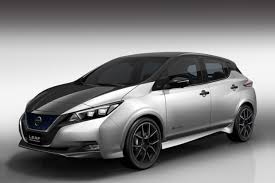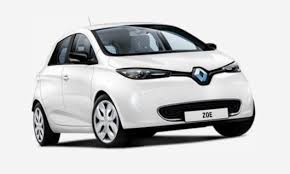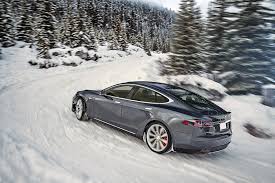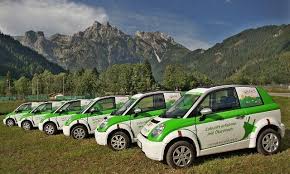Electric cars: myths and reality from Volkswagen
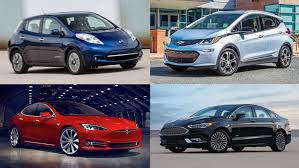 1.”No one can afford an electric car!»
1.”No one can afford an electric car!»
Electric cars are becoming more attractive and affordable. For example, the cost of batteries has fallen by about 80% over the past ten years. Volkswagen ID.3 is an electric car that costs exactly the same as the equivalent Golf TDI. In addition, buyers can apply for a government grant, and operating costs for an electric vehicle are lower. This is due to the fact that electricity costs less than gasoline and diesel, a lower tax is charged, and the maintenance and maintenance costs are only about a third of the costs of cars with conventional transmissions. When you look at the total cost of ownership, electric cars are a bargain for a large number of people.2. “Not enough charging stations!»
The number of charging stations for electric vehicles is growing rapidly. Today in Germany there are more than 17,400 public charging stations, and this number is growing every day. Supermarkets, hotels and Parking operators install charging stations for their customers, while companies do the same for their employees. With the Volkswagen We Charge card, customers will be able to charge from approximately 100,000 charging stations across Europe in the future. The electric car can also be charged slowly with little power consumption from any professionally installed home outlet. Interestingly, about 70% of all charging processes take place at home or in the workplace, which means that charging on the road is often not required.
3. “Charging takes too long!»
No need to quickly charge the electric car as often as you think. About 70% of all charging processes occur at home or at work. And if you need to quickly charge your electric car on a longer journey, ID.3 can be charged with a maximum power of 100 to 125 kW. During a 30-minute stop at the charging station, 30 minutes of charging will be enough to increase the power reserve to 260 kilometers. And the charging process itself is really simple: the app and the electric car not only show the way to the nearest free charging station, but also provide information about the various available outlets. And one thing is for sure: with the rapid development of the charging infrastructure every day it becomes easier to own and operate an electric car.
4. “Electric cars can only travel short distances»
The problem of power reserve has long been a thing of the past: the latest electric vehicles have a power reserve of up to 550 km. Charging infrastructure is also constantly improving, especially on motorways. In Germany, there are already about 2,000 public fast-charging stations where electric cars can be charged within minutes. Ionity — a joint venture between German car manufacturers — is currently installing a powerful charging station every 120 miles along European motorways. It goes without saying that the charging network will continue to grow in the coming years.
5. “Electric cars are too dangerous!»
Electric cars guarantee the highest possible degree of safety — as well as all cars allowed for use in Germany and Europe. Special safety systems allow to avoid fire and electric shock. For example, in the event of an accident, the high-voltage battery is immediately blocked. In addition, Volkswagen installs its batteries in a large, impact-resistant unit at the bottom of the car, thereby protecting them from deformation. ADAC tests have repeatedly shown that the risk of fire in electric vehicles is much lower than in cars with ice. The charging process is completely safe in all cases and can also be done in the rain without any problems.
6. “Electric cars do nothing for the climate»
Electric vehicles make a valuable contribution to climate protection. They produce much less CO2 than cars with diesel and gasoline engines. This is true even when taking into account the production of an electric car. During its life cycle Golf TDI produces an average of 140 grams of CO2 per kilometer. E-Golf, powered by electricity, produces only 119 grams. The electric car is also on the same level with cars running on hydrogen and eFuel (synthetic fuel). In the years to come, this environmental benefit will become more and more important as more clean electricity is supplied to the grid in all major markets. As a result, electric cars will be automatically charged with renewable energy. with ID.3 Volkswagen is taking another step forward, for the first time releasing a car with absolutely neutral carbon emissions. This makes ID.3 pioneer in sustainable mobility.
7. “Too many electric cars will overload the grid!»
Can the German power grid cope with the electric boom? Answer: Yes. Authoritative studies have concluded that even a million additional electric vehicles will not affect the German grid. Annual energy consumption in Germany is about 520 terawatt-hours. One million electric cars consume about 2.4 terawatt-hours per year, which is only 0.5% of total demand. Today’s power grid can handle it. In addition, Germany currently produces more electricity than necessary. By the way, the country of electric vehicles, Norway, demonstrates every day that there is no need to worry about the supply of electricity.
8. “It’s worth the work!
The production of an electric car requires about 30% less effort than the production of a car with an internal combustion engine. Therefore, in the long term, there may be fewer jobs in the automotive industry. This makes it increasingly important to establish a good market position in the early stages of electric mobility. In the end, more successful company in the market of electric cars, the safer it work. For this reason, Volkswagen is actively promoting this transformation and, with the advent of electric mobility, creates new long-term prospects for many thousands of employees. Almost all Volkswagen plants in Germany are involved in the production of new ID electric vehicles. At the Zwickau plant alone, about 8,000 people will be working on the ID series. At a time when the automotive industry is in the process of structural transformation, electric vehicles are vital to ensure stable operation.
9. “Electric cars are dangerous for pedestrians!»
Unlike conventional cars, electric cars do not have an internal combustion engine, so they are very quiet. In General, the lack of noise is an advantage — and there is no reason why electric cars can be a danger to pedestrians. At speeds up to 30 km/h ID.3 emits its futuristic sound. At higher speeds, there will be enough noise generated by the tires. By the way, this sound will be mandatory for all electric vehicles since the summer of 2019. Also, electric cars such as ID.3, use comprehensive assistance and security systems to meet high safety standards.
10. They’re not funny!»
Electric cars are fun. Electric motors have sufficient power, especially when accelerating. Anyone who presses on the accelerator, firmly pressed into his place — almost like in an airplane. This is because electric motors have access to the maximum torque from the start. Add to that dynamic stability on the road: as the batteries in the car’s floor really keep the electric car on the road. ID. R showed that acceleration from 0 to 100 km/h is possible in just 2.25 seconds. In addition, electric cars offer more legroom because they don’t need an internal combustion engine, a transmission, or a center panel.
11. “Electric cars look boring!»
To date, electric cars look pretty inconspicuous. For example, only experts can recognize the difference between an electric Golf and an ordinary one. However, everything is changing: Volkswagen models from the ID series will have a modern, almost futuristic design with light elements. The interior will also undergo renovation: as electric motors take up significantly less space, the proportions of the interior design and space can be completely redesigned. In the future there will be an electric car for every taste and request. Models from the ID series will range from compact cars and SUVs to vans.
